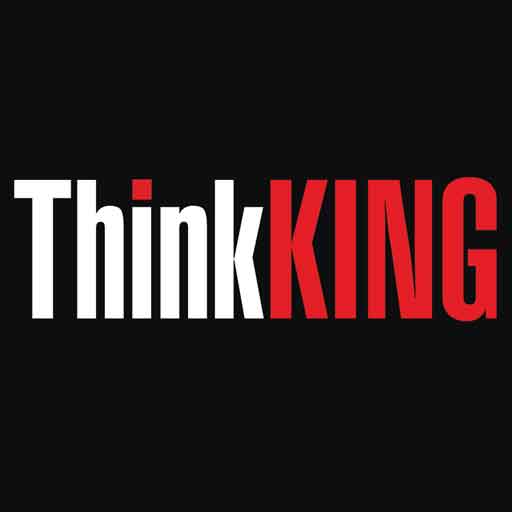How Many mg of Caffeine is in Panera Charged Lemonade
Panera Bread’s Charged Lemonade has stirred a buzz with its concealed caffeine punch. Amidst the landscape of energizing drinks, this lemonade offers a hidden jolt, potentially rivaling a can of Monster Energy. However, controversy swirls with the term “Suicide Lemonade” being bandied about, raising questions about safety and marketing ethics. As consumers grapple with the caffeine content — a detail Panera must clarify — concerns have surfaced over health risks, though no deaths linked to the beverage have been reported. The availability of this charged concoction remains a query, with Panera’s current menu reflecting shifts in consumer preferences and legal scrutiny. Pricing also comes into play, influencing decision-making for those seeking a caffeinated sip without the typical energy drink label. It’s a conversation balancing informed choices and the appeal of a caffeine fix wrapped in a lemonade facade.

The Caffeine Content: A Deep Dive
Diving into the caffeinated core of Panera’s Charged Lemonade, we encounter a startling revelation. The Mango Yuzu Citrus flavor, in its grand 30-ounce form, boasts a whopping 390 milligrams of caffeine, as per lawsuits and Panera’s own website. However, confusion arises as another Panera webpage cites a lower figure of 235 milligrams for the same drink. This discrepancy highlights the need for clarity in caffeine content listings, which is crucial for consumers making informed choices.
The health implications are significant, stirring a debate around safe caffeine consumption. While the FDA suggests that up to 400 milligrams of caffeine daily is generally safe for healthy adults, the higher levels in Panera’s Charged Lemonade flirt dangerously close to this upper limit. This becomes particularly concerning when considering pediatric health. The American Academy of Pediatrics advises against caffeine consumption for children under 12 and recommends that teens limit their intake to no more than 100 milligrams per day. As such, the high caffeine content in Panera’s offering raises questions about its suitability for younger consumers and the necessity for clear guidance and labeling to prevent excessive caffeine intake.

The introduction of Panera’s Charged Lemonade to the market has been overshadowed by tragic narratives that have subsequently led to a contentious legal battlefield. Reports and lawsuits have surfaced, claiming that the high caffeine content in the lemonade has led to adverse health effects and, in extreme cases, fatalities. The question circulating in public discourse and the legal sphere is: “How many people have died from Panera lemonade?” While the exact numbers and details might be subject to ongoing legal proceedings, the question alone has cast a shadow over the product’s safety.
In the wake of these allegations, numerous legal actions have been initiated against Panera. Plaintiffs have accused the company of misleading marketing practices, arguing that the caffeine content was not clearly communicated to consumers, particularly to those at heightened risk such as individuals with underlying health conditions or sensitivities to caffeine. Panera’s response to these legal challenges has included efforts to increase transparency regarding the caffeine levels in its beverages.
Amidst the legal turmoil, there has been a persistent call for more warnings and better education for consumers about the potential risks associated with high caffeine consumption. This growing demand underscores the necessity for food and beverage companies to prioritize customer health and well-being through clear labeling and conscientious marketing.
Caffeine in Perspective: Comparisons and Consequences
When evaluating the caffeine content in Panera’s Charged Lemonade, it becomes essential to place it in context by comparing it with other popular caffeinated beverages. A standard 16-ounce Monster Energy drink contains about 160 milligrams of caffeine. This means the Charged Lemonade’s reported 390 milligrams for a 30-ounce serving significantly eclipses that of a Monster, commonly perceived as a high-caffeine beverage.
Health experts have weighed in on the broader implications of such high caffeine levels in consumer drinks. The potential side effects of excessive caffeine intake can range from mild discomforts, like jitters and insomnia, to more severe health risks, including heart palpitations, increased blood pressure, and in rare cases, toxic reactions. These risks are amplified in individuals with certain health conditions or those who are not accustomed to high caffeine levels.
To mitigate these risks, medical professionals and regulatory agencies advocate for safe consumption practices. For adults, this involves adhering to the FDA’s recommendation of no more than 400 milligrams of caffeine per day. For adolescents, the guidelines are more conservative, with recommendations often suggesting much lower limits due to the group’s increased sensitivity to caffeine’s effects. The consensus among health experts is clear: awareness and moderation are key in the safe consumption of caffeinated products.

Panera’s Response and Product Availability
Is Panera Still Selling Charged Lemonade? As of my last update, the availability of Panera’s Charged Lemonade may vary depending on the outcome of legal actions and public response. It would be necessary to check Panera’s official website or inquire at local Panera Bread locations for the most current information on the product’s status.
Menu Adjustments and Customer Information In response to the controversy surrounding Charged Lemonade, Panera may have made adjustments to its menu. These adjustments could include updating the nutritional information to provide clearer caffeine content disclosures, or potentially altering the beverage’s formulation to reduce caffeine levels. Additionally, Panera might have taken steps to better inform customers about the caffeine content in their drinks, enabling them to make more informed choices.
Pricing and Consumer Choices The pricing of Panera’s Charged Lemonade, along with any other product, is typically influenced by several factors, including production costs, market positioning, and consumer demand. Given the situation, Panera may also consider customer feedback and the implications of ongoing legal issues when determining the price. Consumers, on their part, weigh the cost against their desire for the product and the available information about its caffeine content and potential health impacts.
Marketing and Consumer Perception
The Term “Suicide Lemonade”: A Misnomer? The term “Suicide Lemonade” may have been colloquially applied to Panera’s Charged Lemonade due to its high caffeine content. However, such a name could be considered a misnomer and potentially insensitive. It does not accurately convey the actual product but rather an extreme reaction to it. Marketing a product with such a term would be unconventional and risky, as it could evoke negative connotations and affect consumer perception. It is crucial for Panera to avoid such terminology and opt for more appropriate, clear, and responsible product naming.
The Importance of Informed Choices Informed choices in the context of high-caffeine beverages are essential. Consumers must have access to transparent information about the caffeine content and potential health risks associated with the beverages they are purchasing. This includes clear labeling, public education campaigns, and direct communication from companies about the intended use and safe consumption levels of their products. Companies like Panera have a responsibility to ensure that consumers are making choices with a full understanding of the potential consequences for their health.
Navigating a World of High-Caffeine Beverages As the market for energy-boosting drinks expands, consumers are increasingly confronted with an array of high-caffeine options. Navigating this world requires a balance of personal responsibility and corporate accountability. Individuals must take the initiative to educate themselves and monitor their caffeine intake, especially in the context of their own health and sensitivity to caffeine. At the same time, companies must commit to ethical marketing practices, prioritizing consumer health and safety in the promotion and formulation of their caffeinated products.
| Please note that all information presented in this article has been obtained from a variety of sources, including wikipedia.org and several other newspapers. Although we have tried our best to verify all information, we cannot guarantee that everything mentioned is accurate and 100% verified. Therefore, we recommend caution when referencing this article or using it as a source in your own research or report. |
how many mg of caffeine is in panera charged lemonade, is panera still selling charged lemonade,how many people have died from panera lemonade, panera charged lemonade price, suicide lemonade,monster energy caffeine, panera bread menu, panera charged lemonade deaths,









